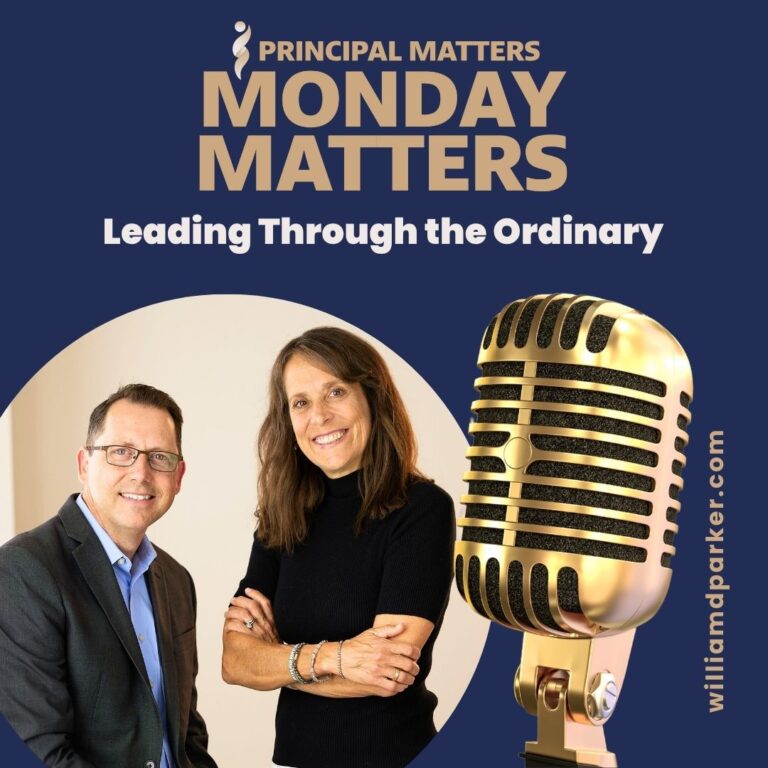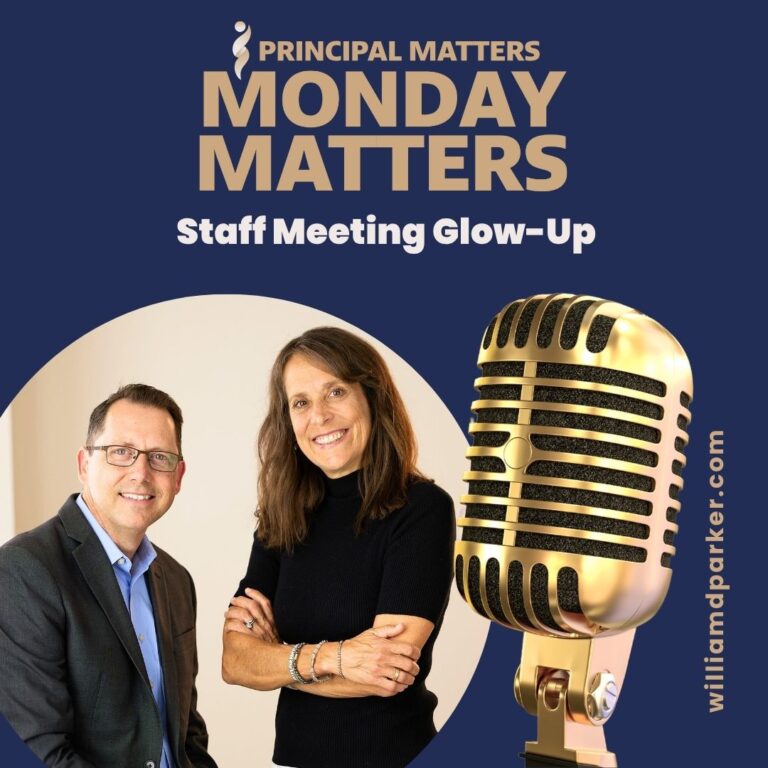Podcast: Play in new window | Download
This time of year, I’m on the road a lot visiting schools across my state.
As I drive across Oklahoma, trees and fields have been brushed with the red and orange hues of fall. Rivers are swollen with much needed rains. And you can feel the first hints of winter’s chill in the strong prairie winds. The change in weather also brings along a change in expectations too. Teachers and students are talking about fall break, Thanksgiving, and even Christmas.
Just as our physical environment influences our feelings and attitudes, our school cultures also affect they way we feel about school. And as I visit with school leaders, I am hearing a lot of conversations about the importance of their school culture. Building strong school culture is a tall order but one that more and more school leaders realize is the foundation for building a community of learning.
This past year, I was invited to participate in a committee of school leaders who are researching best-practices for encouraging strong school culture. During that process, we have discussed a lot of research that confirms why school culture matters.
Heather Shaffery, a researcher from the K20 Center at the University of Oklahoma sits with me on this committee. Although the final report has yet to be published, I wanted to share a conversation we had as we looked closely at takeaways from the research. Specifically, we discussed research from The National School Climate Center (NSCC), which includes multiple case-studies for schools on ensuring positive quality climate and school culture. (See NSCC’s 5-phases for school culture).
Heather’s Bio
Heather Shaffery is a researcher at the K20 Center at the University of Oklahoma.
She has a Bachelor’s degree in Science from Arizona University and a Master’s degree in Science from the University of Pittsburg. Heather was a teacher of middle school science in Oklahoma. Now she conducts research and runs professional development for science teachers. She is also a doctoral student at the University of Oklahoma.
The following is an outline of highlights from our talk. Or listen-in to the podcast version for the full-conversation:
School Culture & School Leaders
What are takeaways for school leaders in understanding how they influence culture?
- Research confirms the importance of the leader in a building. If you want strong culture, you need strong school leaders.
- Strong school leaders have the the ability to encourage and share leadership. They do not operate in isolation or without input.
- Strong school leaders understand the importance of meaningful listening and valuing the ideas of others.
School Culture & Teachers
What are takeaways for teachers?
- Most teachers know what constitutes good culture. But the challenge is an inability or resistance to implementing or practicing what’s best.
- When schools practice shared listening with collaboration for leadership decisions, teachers feel empowered toward stronger instructional practice.
- When teachers do not feel like their feedback is valued, they will be less inclined toward risk-taking and innovative instruction.
School Culture & Students
What are the implications for students?
- Involving students in shared leadership, not just on leadership teams, but in classrooms, increases student learning and achievement.
- Teachers must explore these questions with students: What do they want to learn? What do they care about? How do you leverage their interests and input in their own learning?
School Culture School-wide
What’s the result for school-wide practice?
- As culture and technology shifts, bullying has increased in schools. But when schools practice strong growth in culture, the result is a decline in those negative behaviors.
- As students feel safe, secure, and accepted, the entire school culture becomes a place that encourages responsibility, trust, and achievement.
Let’s Wrap This Up
Just as daily weather influences our thoughts and attitudes, our school cultures matter for student learning. As we see shifts in Millennials and Gen-Z educators taking the place of retiring teachers, we also see a shift in teachers and students who expect and often demand inclusion and input. Schools must shift toward shared-leadership models in order to provide settings of strong culture and student-centered learning. As you make these commitments, you will see an environment that encourages leaders, teachers, students, and communities to become communities of belonging — the ideal conditions for strong student flourishing.
Now It’s Your Turn
What are some ways you are embedding shared-leadership practices in your school? How are you seeking and implementing input from teachers and students? In what ways can teachers solicit and value input from students for classroom instruction? What is one step you can take today toward encouraging an environment of belonging and safety for others?
Sign-Up For Free Updates and Ebook
When you enter your email address here, you will automatically receive my newest posts and a free Ebook, 8 Hats: Essential Roles for School Leaders. Let’s keep learning together!
Principal Matters–The Book!
School leaders are very busy, so each of the twenty-four chapters is designed as a quick-read and followed with take-action questions for follow-up or reflection. If you want practical ideas on understanding your purpose, managing school teams, dealing with challenges, and leading with courage, action, motivation, and teamwork, go HERE to pick up a copy for you or your team.
Messaging Matters
Harness the power of messaging to create a culture of acknowledgment, respect, and celebration. Written specially for leaders, this title is divided into three parts, helping readers to maximize their role as chief communicators with students, teachers, and parents and community. Each chapter includes suggestions for using digital tools to enhance messaging and ends with reflection questions and practical next steps.




